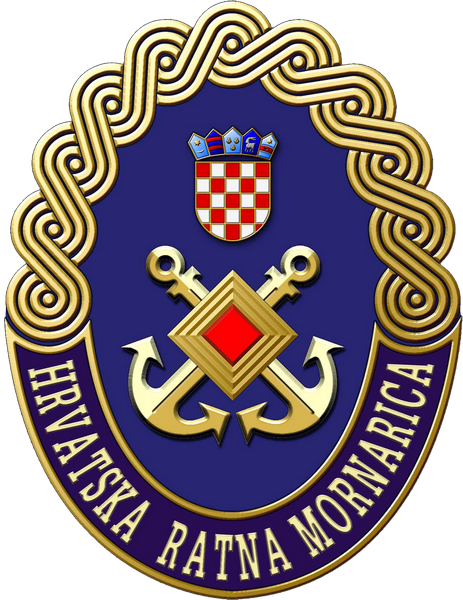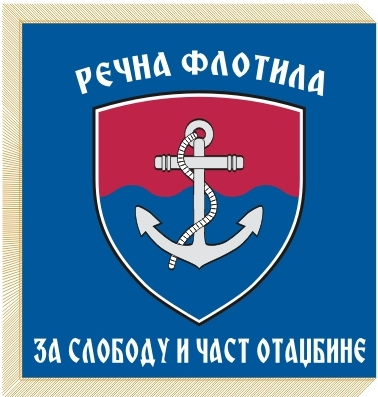|
Fregattenleutnant
''Fregattenleutnant'' ( hu, Fregatthadnagy; ) was an officer rank in the Austro-Hungarian Navy. It was equivalent to Oberleutnant of the Austro-Hungarian Army, as well to Oberleutnant zur See of the Imperial German Navy. Pertaining to the modern day's Naval officer ranks#NATO Rank Codes, NATO rank code it could be comparable to OF-1a (senior). The right to be assigned to ''Fregattenleutnant'' was limited to professional officers. It was superior to Korvettenleutnant (a reserve rank) and inferior to Linienschiffsleutnant. Until 1908 the rank was called ''Linienschiffsfähnrich'' (ship-of-the-line ensign). Professional officers skipped that rank ''Fregattenleutnant'' and were regularly promoted from Seefähnrich to Fregattenleutnant (also OF-1a), the next higher rank (comparable to Oberleutnant zur See). The rank name was selected in line to the division of war ships to specific ship categories early of the 19th century, e.g. corvette (german: Korvette), frigate (german: Fregatt ... [...More Info...] [...Related Items...] OR: [Wikipedia] [Google] [Baidu] |
Korvettenleutnant
''Korvettenleutnant'' ( hu, Tengerészzászlós; ) was an officer rank in the Austro-Hungarian Navy. It was equivalent to Leutnant of the Austro-Hungarian Army, as well to Leutnant zur See of the Imperial German Navy. Pertaining to the modern day's NATO rank code it could be comparable to OF-1b. The right to be promoted to ''Korvettenleutnant'' was limited to so-called naval reserve officers only. However, professional officers skipped that rank and were regular promote from Seefähnrich to Fregattenleutnant (also OF-1a), the next higher rank (comparable to Oberleutnant zur See). A ''Korvettenleutnant'' wore the same rank insignia as a '' Seefähnrich''. The rank name was selected in line to the division of war ships to specific ship categories early of the 19th century, e.g. corvette (german: Korvette), frigate (german: Fregatte), and to ship of the line (german: Linienschiff). In the Austro-Hungarian Navy the appropriate rank designations were derived as follows. *Korvett ... [...More Info...] [...Related Items...] OR: [Wikipedia] [Google] [Baidu] |
Linienschiffsleutnant
is a German language variant of the naval officer rank ship-of-the-line lieutenant. The rank is used by the Belgian Navy and formerly the Austro-Hungarian Navy. Austro-Hungary (; hu, Sorhajóhadnagy) was an officer rank in the Austro-Hungarian Navy. It was equivalent to of the Austro-Hungarian Army, as well to of the Imperial German Navy. The rank designation was used continuously in the Austria-Hungarian follow on countries Yugoslavia, Croatia, and Slovenia, as well as in the modern day's Austrian merchant navy. The rank name was selected in line to the division of war ships to specific ship categories early of the 19th century, e.g. corvette (), frigate (), and to ship of the line (). In the Austro-Hungarian Navy the appropriate rank designations were derived as follows. According to that systematic the rank designations to subaltern – or junior officers were derived as follows: * Linienschiffsleutnant equivalent to Hauptmann * Fregattenleutnant equivalent t ... [...More Info...] [...Related Items...] OR: [Wikipedia] [Google] [Baidu] |
Austro-Hungarian Navy
The Austro-Hungarian Navy or Imperial and Royal War Navy (german: kaiserliche und königliche Kriegsmarine, in short ''k.u.k. Kriegsmarine'', hu, Császári és Királyi Haditengerészet) was the naval force of Austria-Hungary. Ships of the Austro-Hungarian Navy were designated ''SMS'', for ''Seiner Majestät Schiff'' (His Majesty's Ship). The k.u.k. Kriegsmarine came into being after the formation of Austria-Hungary in 1867, and ceased to exist in 1918 upon the Empire's defeat and subsequent collapse at the end of World War I. Prior to 1867, the Imperial Austrian Navy or simply the Austrian Navy, saw action in the French Revolutionary Wars, the Napoleonic Wars, the Austrian expedition against Morocco (1829), the Second Egyptian–Ottoman War, the First and Second Wars of Italian Independence, the Second Schleswig War, and the Third War of Italian Independence. Following Austria's defeat by Prussia and Italy during the Seven Weeks' War, the Austrian Empire reformed itself i ... [...More Info...] [...Related Items...] OR: [Wikipedia] [Google] [Baidu] |
Slovenian Navy
The Slovenian Navy, officially the 430th Naval Division is not a separate service, but an integral part of the Slovenian Armed Forces. History The Slovenian navy was created after independence in 1991, as the Territorial Defense Forces of Slovenia had not been equipped with any maritime assets. No significant action of the Ten-Day War occurred at sea. In 1991, a small diving detachment was formed in Ankaran, equipped with sport-diving equipment because of the UN arms embargo against the former Yugoslav republics. The 430th Naval Division was officially created in 1993. After the embargo was lifted in 1996, Slovenia purchased a single Israeli-built IAI-Ramta Super Dvora Mk2-class patrol boat, which was named ''Ankaran'' after the coastal town. In 2008, the Ministry of Defense announced that Slovenia would procure one Russian Project 10412 patrol boat, offered in payment of a multimillion-dollar debt owed to Slovenia. The vessel was subsequently named ''Triglav'', after the moun ... [...More Info...] [...Related Items...] OR: [Wikipedia] [Google] [Baidu] |
Naval Jack Of Slovenia
A navy, naval force, or maritime force is the branch of a nation's armed forces principally designated for naval and amphibious warfare; namely, lake-borne, riverine, littoral, or ocean-borne combat operations and related functions. It includes anything conducted by surface ships, amphibious ships, submarines, and seaborne aviation, as well as ancillary support, communications, training, and other fields. The strategic offensive role of a navy is projection of force into areas beyond a country's shores (for example, to protect sea-lanes, deter or confront piracy, ferry troops, or attack other navies, ports, or shore installations). The strategic defensive purpose of a navy is to frustrate seaborne projection-of-force by enemies. The strategic task of the navy also may incorporate nuclear deterrence by use of submarine-launched ballistic missiles. Naval operations can be broadly divided between riverine and littoral applications (brown-water navy), open-ocean applications (blue- ... [...More Info...] [...Related Items...] OR: [Wikipedia] [Google] [Baidu] |
Serbian River Flotilla
The Serbian River Flotilla ( sr, Речна флотила, Rečna flotila) is a tactical brigade-level brown water naval branch of the Serbian Armed Forces. Patroling on the Danube, Sava, and Tisa rivers, it is tasked with environmental policing, counter-terrorism, and border security along country's international river borders. History The modern Serbian River Flotilla pulls it origins from Serbian Šajkaši river troops that guarded the Danube and Sava rivers, and especially, the Port of Belgrade, against Ottoman Empire river fleets from the 16th to the 19th century. Led by Hungarian or Austrian sponsors against the Ottomans, šajkaš troops were ethnic Serbs, who enjoyed special military status. Their name Šajkaš was derived from the small wooden boat known as '' chaika'' (Šajka, ''tschaiken''), a type of galley operated by sail or oars manned by 30 and 50 men, commanded by an officer, a helmsman, an armourer, a drummer, two bowman, and up to 36 oarsmen. The modern ... [...More Info...] [...Related Items...] OR: [Wikipedia] [Google] [Baidu] |
Croatian Navy
, image = Seal of Croatian Navy.png , caption = Emblem of the Croatian Navy , start_date = 1991 , country = , allegiance = , branch = , type = Navy , role = , size = 1,36330 vessels , command_structure = Armed Forces of Croatia , garrison = Lora, Split, Croatia , garrison_label = H/Q , nickname = , patron = Saint Nicholas , motto = , colors = , colors_label = , march = ( en, We are Croatian sailors!) , mascot = , battles = Croatian War of IndependenceOperation AtalantaOperation Triton , anniversaries = September 18 , website = https://www.morh.hr/en/ , battle_honors = , identification_symbol = , identification_symbol_label = Ensign , identification_symbol_2 = , identification_symbol_2_label = Jack , commander1 = Commodore Ivo Raffanelli , commander1_label = Commander , commander2 = Ship-of-the-line cpt. Milan Blažević , commander2_label = Deputy Commander,Chief of Naval Staff , ceremonial_chief = , ceremonial_chief_label = , colon ... [...More Info...] [...Related Items...] OR: [Wikipedia] [Google] [Baidu] |
Seal Of Croatian Navy
Seal may refer to any of the following: Common uses * Pinniped Pinnipeds (pronounced ), commonly known as seals, are a widely distributed and diverse clade of carnivorous, fin-footed, semiaquatic, mostly marine mammals. They comprise the extant families Odobenidae (whose only living member is the walru ..., a diverse group of semi-aquatic marine mammals, many of which are commonly called seals, particularly: ** Earless seal, or "true seal" ** Fur seal * Seal (emblem), a device to impress an emblem, used as a means of authentication, on paper, wax, clay or another medium (the impression is also called a seal) * Seal (mechanical), a device which helps prevent leakage, contain pressure, or exclude contamination where two systems join Arts, entertainment and media * Seal (1991 album), ''Seal'' (1991 album), by Seal * Seal (1994 album), ''Seal'' (1994 album), sometimes referred to as ''Seal II'', by Seal * ''Seal IV'', a 2003 album by Seal * ''Seal Online'', a 2003 massive ... [...More Info...] [...Related Items...] OR: [Wikipedia] [Google] [Baidu] |
Coat Of Arms Of The Austro-Hungarian Navy
A coat typically is an outer garment for the upper body as worn by either gender for warmth or fashion. Coats typically have long sleeves and are open down the front and closing by means of buttons, zippers, hook-and-loop fasteners, toggles, a belt, or a combination of some of these. Other possible features include collars, shoulder straps and hoods. Etymology ''Coat'' is one of the earliest clothing category words in English, attested as far back as the early Middle Ages. (''See also'' Clothing terminology.) The Oxford English Dictionary traces ''coat'' in its modern meaning to c. 1300, when it was written ''cote'' or ''cotte''. The word coat stems from Old French and then Latin ''cottus.'' It originates from the Proto-Indo-European word for woolen clothes. An early use of ''coat'' in English is coat of mail (chainmail), a tunic-like garment of metal rings, usually knee- or mid-calf length. History The origins of the Western-style coat can be traced to the sleeved, close- ... [...More Info...] [...Related Items...] OR: [Wikipedia] [Google] [Baidu] |
Hauptmann
is a German word usually translated as captain when it is used as an officer's rank in the German, Austrian, and Swiss armies. While in contemporary German means 'main', it also has and originally had the meaning of 'head', i.e. ' literally translates to 'head-man', which is also the etymological root of ''captain'' (from Latin , 'head'). It equates to the rank of captain in the British and US Armies, and is rated OF-2 in NATO. Currently there is no female form, like ''Hauptfrau'' within the military, the correct form of address is "''Frau Hauptmann''". More generally, a Hauptmann can be the head of any hierarchically structured group of people, often as a compound word. For example, a is the captain of a fire brigade, while refers to the leader of a gang of robbers. Official Austrian and German titles incorporating the word include , , , and . In Saxony during the Weimar Republic, the titles of , and were held by senior civil servants. (from Early Modern High German ... [...More Info...] [...Related Items...] OR: [Wikipedia] [Google] [Baidu] |




